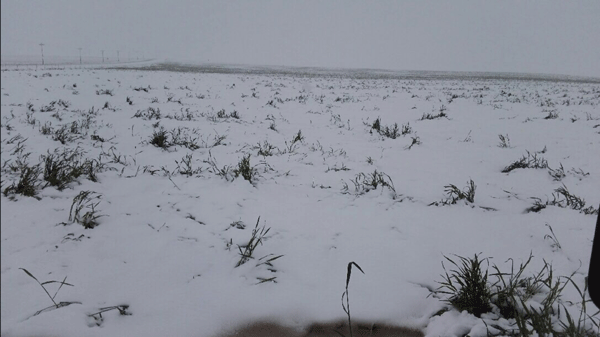OF THE
TIMES

Leave it to a researcher who studies icy moons in the outer solar system to come up with an out-there scheme to restore vanishing sea ice in the Arctic.
Ice is a good insulator, says Steven Desch, a planetary scientist at Arizona State University in Tempe. That's why moons such as Jupiter's Europa and Saturn's Enceladus, among others, may be able to maintain liquid oceans beneath their thick icy surfaces. On Earth, sea ice is much thinner, but the physics is the same. Ice grows on the bottom surface of floating floes. As the water freezes, it releases heat that must make its way up through the ice before escaping into the air. The thicker the ice, the more heat gets trapped, which slows down ice formation. That's bad news for the Arctic, where ice helps keep the planet cool but global warming is causing ice to melt faster than it can be replaced.
The answer to making thicker ice more quickly? Suck up near-freezing water from under the ice and pump it directly onto the ice's surface during the long polar winter. There, the water would freeze more quickly than underneath the ice, where it usually forms.In theory, Desch says, the pumps used for this top-down approach to ice growth could be driven by technology no more sophisticated than the windmills that have long provided water to farms and ranches on the Great Plains.
Desch and colleagues envision putting such pumps on millions of buoys throughout the Arctic. During winter, each pump would be capable of building an additional layer of sea ice up to 1 meter thick over an area of about 100,000 square meters...
[...]
Now is the time to begin detailed designs and build prototypes, Desch says. The Arctic Ocean's end-of-summer sea ice coverage has decreased, on average, more than 13 percent per decade since 1979. "There'll be a time, 10 to 15 years from now, when Arctic sea ice will be accelerating to oblivion, and there'll be political will to do something about climate change," Desch says. "We need to have this figured out by the time people are ready to do something."
Science News
Read more: Winter Blast Putting Climate Protests On Ice In ColoradoWinter Blast Putting Climate Protests On Ice In Colorado
...
Organized by groups seeking to ban the production of oil, natural gas, and coal, including 350.org, Sierra Club, and NextGen Climate, the "People's Climate March" is occurring tomorrow in Washington, D.C., and cities across the country to protest the Trump administration's environmental policies.
With the Washington protest reportedly expected to draw tens of thousands of attendees, hundreds of "sister marches" are planned for cities across the country. But one out of the twelve protests in Colorado has already been postponed due to an impending snowstorm. The National Weather Service's winter storm warning projects six to 12 inches of snow, but there is potential for up to two feet in the Denver Metro Area.
"Sometimes Mother Nature throws you a curveball!" 350 Colorado Springs wrote in a Facebook page earlier this afternoon. "Dangerous conditions and wet heavy snow in the forecast for tomorrow. Stay safe and warm and join us Sunday afternoon same time and place!!"
...
Comment: NOAA Thumbs its nose at President Trump with "preposterous" sea level rise forecast